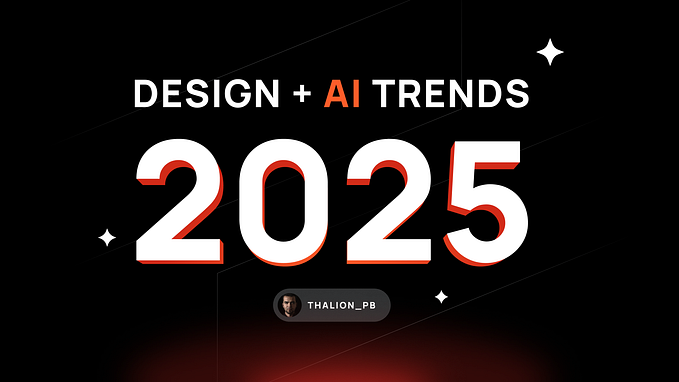10 tips for better book designs
By Thomas Bohm of User Design, Illustration and Typesetting. Published October 2017. Editorially corrected in March 2023.

Introduction
This paper presents 10 tips for improving book designs, they come out of my own practical experience and observations from designing books. There are many parts, processes and people involved in the production of a book, decisions are usually not down to 1 person alone, but a group of people each with there own requirements, understandings and style preferences. Subsequently, a successful and open-minded editorial/designer/client relationship is essential for good designs.
1. Make the gutter as wide as it needs to be
Frequently it can be seen that text in books is hampered by the arch of the open book and that it falls into the gutter, that causes text that is hard to read and annoys readers because the text on the inner right side (of a left side page: verso) and inner left side (of a right-side page: recto) bends into the gutter. A reason why this happens, is because the designer has failed to make the gutter wide enough. Many books these days are perfect bound, the typical hot-melt glue used, dries very stiff and does not allow the book to lay flat, unlike cold-melt glue that when dries is flexible and allows books to open and lay much flatter (Kinross, 2007). Typically for a perfect-bound book, the left and right inner gutters should be no less than 25mm each side. If you have had books produced by the same printer/binder before, and will do again, you can measure to see how much the book arches into the gutter. Also if you use a proportion, for instance like the Golden Section, if the gutter is too narrow it is possible at the last stage of designing the grid system, to increase the gutter width by moving the text area towards the outer edges (Hochuli & Kinross, 1996). By making the gutter wide enough, it will stop the text from falling into the gutter, and let the text be presented in a much flatter and readable way.
2. Position columns in tables as close together as possible
1 way to position columns in a table, is to space them out, to fill the width of the table in main body text width. This is not advisable because you will increase the space between columns, subsequently making it harder for readers to read the table in a horizontal way. Best practice it to space columns horizontally with as little space between them, but no less than 5mm. Creating tables that have columns horizontally spaced close together, makes it much easier to read the table horizontally, and also to link possible table headings to the left of the table (in the 1st column), to other data to the right.
3. Reflect the content and issues of the book in the book cover design
Often it can be seen that book cover designs present a thin singular concept or imagery, in relation to the book’s content and issues. This produces a book cover communication that does not relate the content of the book to the reader, and does not lead to further speculation or imagination. It is much better for the book cover’s communication, through typography and imagery, if the book’s content and issues are reflected in the book cover design. Read the story, blurb or contents page to find out what issues are raised within the book. This will lead to book covers that greater describe graphically the book, and subsequently are more appealing and imaginative.
4. Almost always add running heads to the book, and put a chapter number in it
Almost all books will greatly benefit from adding a running head on the left page containing the book title and more important is to add a running head on the right page, with both a chapter title and chapter number in it. Doing this will greatly increase the books usability and the user’s ability to navigate around and find information in the book. Furthermore, if the book gets photocopied or split-up into electronic documents, it will be easy to find the source of the book or chapter, the page came from. If a chapter title is added to the right page with no chapter number, this causes the reader not to be able to find the chapter, by looking for the chapter number in the running head, instead, they have to rely on knowledge from reading the contents page, or by flicking through the book looking for the main chapter title page.
5. Do not use Roman numerals
Some books use Roman numerals (I–X) for prelim pages to distinguish between the front matter and main story, using them is not advisable because people cannot read and understand their value, creating an empty graphic statement. It is much more advisable, clearer and usable to use Arabic numbers (0–9).
6. Adjust the word spacing for better typography
Usually word spacing is not optimally adjusted or is forgotten about. Typographic issues such as leading or kerning are taught in educational establishments, however, word spacing is typically ignored. The default word spacing (also known as justification) values for justified text in QuarkXPress and Adobe InDesign are as follows:


In QuarkXPress and Adobe InDesign the default word spacing is 100%, that is typically too large, although every typeface is different, by decreasing the optimum or desired word spacing to around 80%–90%, not only makes the text more economically fitting in documents but creates a smoother and tighter line, reducing the amount of harsh word space holes, subsequently improving the reading experience, because the eye is now reading a tighter setting of words, rather than hitting large word space holes. The book designer Jost Hochuli states that ‘the word spacing required by a lowercase e is sufficient’ for the average word space size (Hochuli, 1993). To get an even smoother fit of letters and words on a justified line of text, you can use character or letter spacing, in general a value of -3% (Adobe InDesign) or -0.6 (QuarkXPress) for minimum, and 3% (Adobe InDesign) or 0.6 (QuarkXPress) for maximum, is sufficient. (Adobe InDesign is measured in 1/1000 em space, and QuarkXPress is measured in 1/200 em space.)
7. Use off-white or cream paper
The choice of paper is an important choice in the design of a book and can contribute much to the overall atmosphere of the book. Due to trends in the paper industry and minor myths about bright white paper somehow being cheaper than off-white or cream paper, the amount of high bright white paper used for books has rapidly increased. The problem that high bright white paper presents, is that the contrast between black text and high bright white paper is too much (0%–100%). Off-white or cream paper is not only more aesthetically pleasing, but less stressful on the eyes. Due to trends in the industry towards more high bright white paper, it is now quite a challenge to find uncoated off-white or cream paper stocks and even more of a challenge to find coated stocks in off-white or cream paper. An exception to the rule is for people with vision impairments, when indeed maximum contrast is desirable. Lastly, people with dyslexia, 10% of the world’s total population (Pennington, 1991), also complain that the contrast of bright white paper and text causes an unstable and blurry reading experience, and that the letters move around on the page (Bupa, 2011). It has also been known that people with dyslexia, use colored acetate overlays on top of printed information.
8. Add details to the book so users can submit their thoughts and feedback about the design of the book
Often books are published in a very linear fashion, going through the editorial, design and production stages without getting feedback from the main people that will use them, and they are rarely tested with people. An idea to make the process more circular and user-centered would be to put details either on the back cover, colophon or somewhere else in the book, that allows people to submit their thoughts and feedback. A special email address, webpage with a form, paper tear-away form, or simply a guestbook could be provided. A major benefit from doing this, is that you never know what feedback you might get, someone could write something, that could help improve the design, or maybe they have spotted an error somewhere.
9. Tread carefully in the editorial/design/client relationship
A book is more often than not a collaborative effort. You will have to judge and sense when it is the right time to suggest improvements, and agree or disagree to make certain changes from feedback. Some clients are open and welcome suggestions and feedback, other will reject your every suggestion claiming that they know better or that ‘they do not do it like that‘ or ‘it is not suitable’. Jennifer Rowsell (Rowsell, 2000) perhaps sums up the relationship best:
‘[…] textbooks (in the case of my study, reading textbooks) and other educational schemes are the product of a long collaborative process between actors, whose roles in the company are sometimes complementary and sometimes in conflict. The resulting artifact, smooth as it may seem, cannot fail to be the result of numerous transformations and compromises, not only of differing points of view, but of differing intended functions for the text’.
10. Let the designer do their job
If you are the client using a designer, please listen to what they have to say and suggest with an open mind. Ideas and suggestions in a design projects, sometimes do not get implemented when they should do. Please consider what your designer has to say with an open mind and ask yourself, is what is being suggested, an improvement over what you are currently doing or have? Rather than rejecting what is being suggested on style preference basis, or what you have typically done before. Printed books are increasingly being subjected to competition from other areas and technologies, so it is essential in order to survive, that books are produced as well as possible and that new impulses are considered.
References
Bupa. (2011, February). Dyslexia. http://www.bupa.co.uk/individuals/health-information/directory/d/dyslexia?tab=Common%20questions.
Hochuli, J. (1993). Book design in Switzerland. Pro Helvetia.
Hochuli, J. & Kinross, R. (1996). Designing books, practice and theory. Hyphen Press.
Kinross, R. (2007, May 2). Books that lie open. https://hyphenpress.co.uk/2007/05/02/books_that_lie_open/.
Pennington, B. F. (1991). Diagnosing learning disorders: A neuropsychological framework. Guilford Press.
Rowsell, J. (2000). Textbooks as traces of actors, systems, and contexts: A transformational text analysis. Education for Social Democracies Conference — Changing Forms and Sites. http://www.ioe.ac.uk/ccs/conference2000/papers/pde/papers/rowsell.html.
Hope you enjoyed reading. Please do get in contact (see details below).

Notes
The version of this paper that appears here on Medium, is the most original and unedited form that exists. This paper has also been published on the following websites: Book Machine (March 2015), Creative Choices (January 2014) and Creative Bloq (October 2013).
To read more writing from User Design, Illustration and Typesetting, visit our awards and press webpage. If you need an expert book designer and typesetter, check us out.
Copyright
All material copyright © User Design, Illustration and Typesetting. Copyright means you have to get permission from us, if you want to reuse any of our material, in any way.










